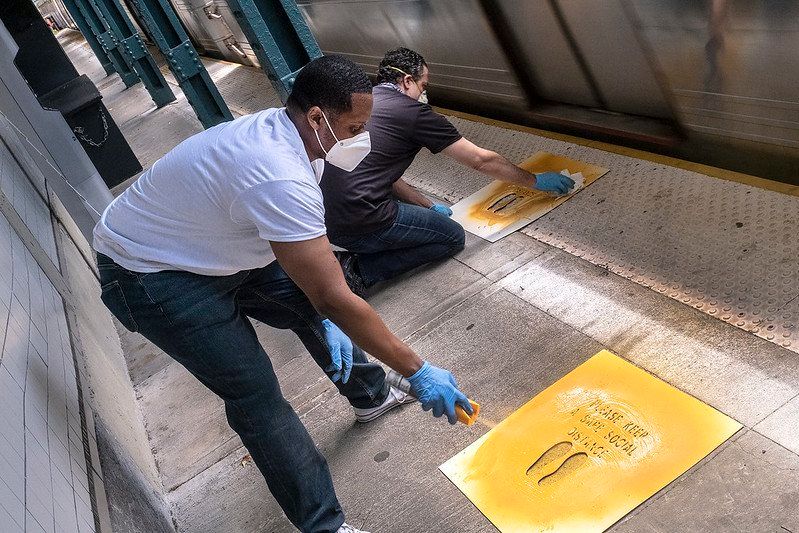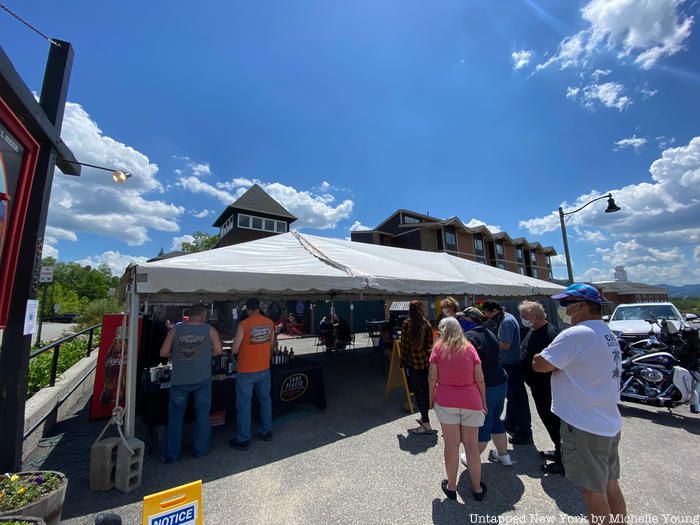Last-Minute NYC Holiday Gift Guide 🎁
We’ve created a holiday gift guide with presents for the intrepid New Yorker that should arrive just in time—


After nearly three months of New York City’s shutdown, effective March 22 as part of “New York State on PAUSE” executive order, the city is entering Phase 1 of its reopening process today, Monday, June 8. New York City has been the only New York region yet to enter Phase 1, which allow workers in industries like construction, manufacturing, and retail (curbside or in-store pickup) to return to work. The city has seen its lowest growth in new daily COVID-19 cases, hospitalizations, and deaths since late March. “We did the impossible. On Monday NYC will open phase one. We didn’t just flatten the curve — we crushed it,” Cuomo tweeted on Saturday.
According to TheCity.nyc’s COVID-19 tracker, there are over 203,000 confirmed COVID-19 cases in New York City, the highest borough being Queens with over 62,000. In New York City, new cases has hovered around 600 per day, while deaths are around 50-60 per day. Cuomo’s office reported 534 new cases on Saturday. However, New York City has met all seven health-related benchmarks to move forward with Phase 1, including reducing the rate of new hospitalizations to at most 2 people per 100,000 residents, have at least 30% total hospital beds available, and have at least 90 days of personal protective equipment stockpiled.

The MTA preps for Phase 1 Reopening of NYC, which included new floor markers for social distancing, directional arrows and new signage. Photo taken at Beverley Road Station in Brooklyn by MTA New York City Transit / Patrick Cashin
In order to accommodate the approximately 200,000 people who will be returning to work according to Manhattan Borough President Gale Brewer, subways and buses will be operating at 100% and 75% of total capacity respectively. All subway cars and 472 subway stations across the city will be sanitized at least once per day. In order to facilitate this transition, the MTA will be distributing two million masks in the first week and installing sanitizer dispensers in cars and stations. The State is providing a million masks and 25,000 gallons and 500,000 2 oz. bottles of hand sanitizer to the MTA.
Additionally, new innovations like UV light sterilization, touch-free turnstiles, and cleaning robots will help ensure safe travel. Brewer advises commuters to wear a mask, maintain six feet of distance if possible, and wash hands with soap and water for 20 seconds at the beginning and end of the commute. Although not operating at full capacity, buses will remain free to ride and must be boarded from the back. “Cities like Seoul and Taipei have found transmission can remain low as long as riders wear masks, avoid speaking, and keep from touching your face or other passengers,” Brewer wrote.

Personal Protective Equipment (PPE) kits for MTA employees which include the New York State hand sanitizer. Photo: Marc A. Hermann / MTA New York City Transit.
The MTA issued a letter to Mayor Bill de Blasio that notes that subway and bus service remains for essential workers and essential trips only during Phase 1, and that the city should deploy additional NYPD workers to the subway to ensure the safety and security of the system. In addition to applying floor markings and supplying hand sanitizer, the MTA is also urging employers to stagger shifts and continue to allow for remote work.
“The NYPD and MTA PD have been working collaboratively to ensure compliance with the requirement for customers to wear a mask or face covering on public transportation,” the letter says. “We have directed the MTA PD to enforce this measure, but we do not support the arrest of those who are not wearing masks, and we do not believe summonses or tickets should be written.”
Additionally, the City’s Department of Small Business Services has released an industry guide to Reopening NYC Businesses, while the City’s Department of Consumer and Worker Protection has released “Reopening NYC: What Workers Need to Know” (PDF). According to the guide, the following retail businesses can reopen for curbside or in-store pickup or drop off only:
• Clothing
• Electronics and appliances
• Flowers
• Furniture and home furnishings
• General merchandise
• Health and personal care items
• Jewelry, luggage, and leather goods
• Lawn and garden supplies
• Office supplies, stationery, and gifts
• Shoes
• Sporting goods, hobby supplies,
musical instruments, and books
• Used merchandise
Employers must post an easily accessibly safety plan at the workplace and must conduct employee health screenings daily, telling workers who experience symptoms to go home. Employers must also give free face coverings and hand hygiene materials to staff throughout the day. Updated workplace laws include New York City’s Paid Safe and Sick Leave Law, as well as regulations deeming discrimination and retaliation illegal. On Saturday, Governor Cuomo announced he would issue a new Executive Order to permit commercial buildings to conduct temperature checks for anyone who enters.

Lake Placid, part of the North Country region in New York State, is in Phase 2 of reopening or “un-pause” which now allows outdoor dining.
For open Phase 1 businesses, occupancy must be reduced to under 50%, and employers are encouraged to limit their workforce presence to only those necessary to conduct curbside and in-store pickup activities. Additionally, only one person should work at confined spaces like small stock rooms, cash registers, and elevators. Cuomo also released an executive order stating that businesses can deny entry to people who are not wearing face coverings. Agencies like the Department of Consumer and Worker Protections and the Department of Small Business Services will help train business owners in proper protocols and will distribute guides and regulations to employers, as well as conduct random inspections. A list of all mandatory and recommended practices can be found here.
The Harlem Covid Working Group is also hosting a Virtual Contact Tracing Job Fair on Tuesday, June 9, for people to learn more about the City’s plan to hire 5,000 contact tracers by August 1 and get information on how to apply. Additionally, attached here is a current list of COVID-19 testing sites by borough provided by NYC Health + Hospitals.
“Remember that reopening does not mean that we’re going back to the way things were,” Governor Cuomo said. “Life is not about going back. Nobody goes back. We go forward. And it’s going to be different. This is about reopening to a new normal — a safer normal. People will be wearing masks and people will be socially distanced — it’s a new way of interacting, which is what we have to do. Wear a mask, get tested and socially distance.”
Phase 2 will include professional services, finance and insurance, retail, administrative support, real estate, rental and leasing, along with outdoor dining. Phase 3 will be indoor seating for restaurants and food services, Phase 4 will be arts, entertainment, and recreation.
Next, check out a Behind the Scenes Look Inside the New York State Capitol in Albany.
Subscribe to our newsletter